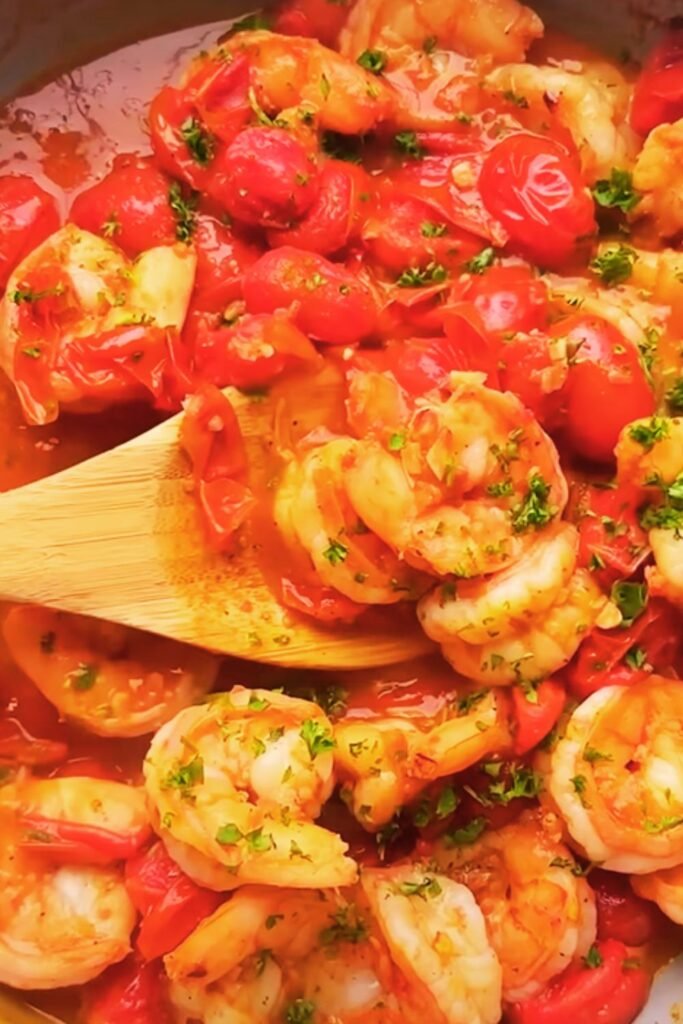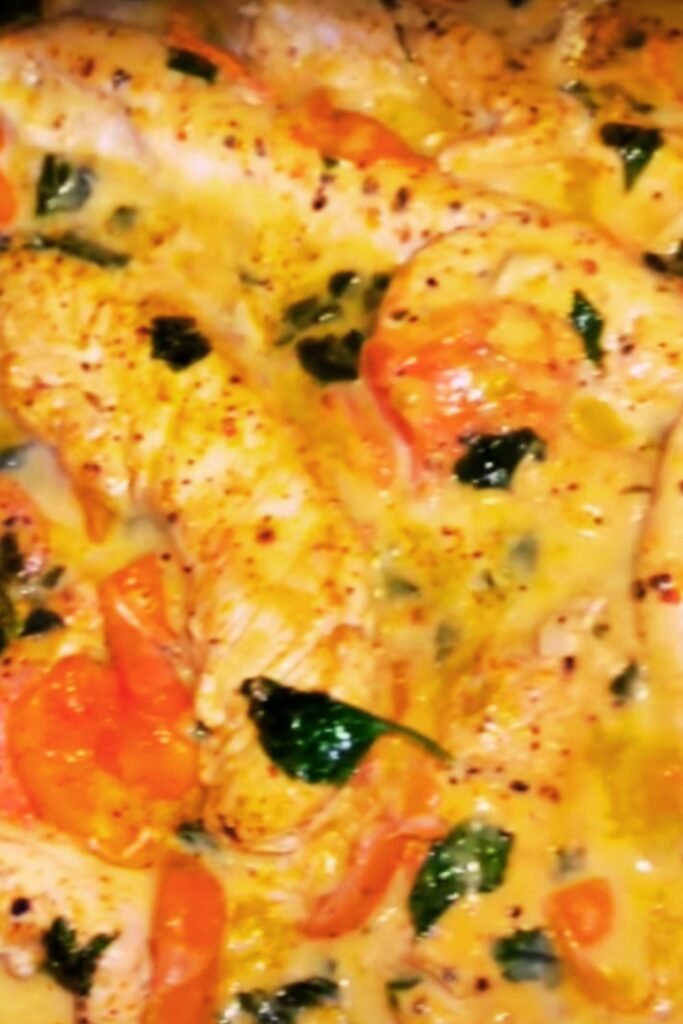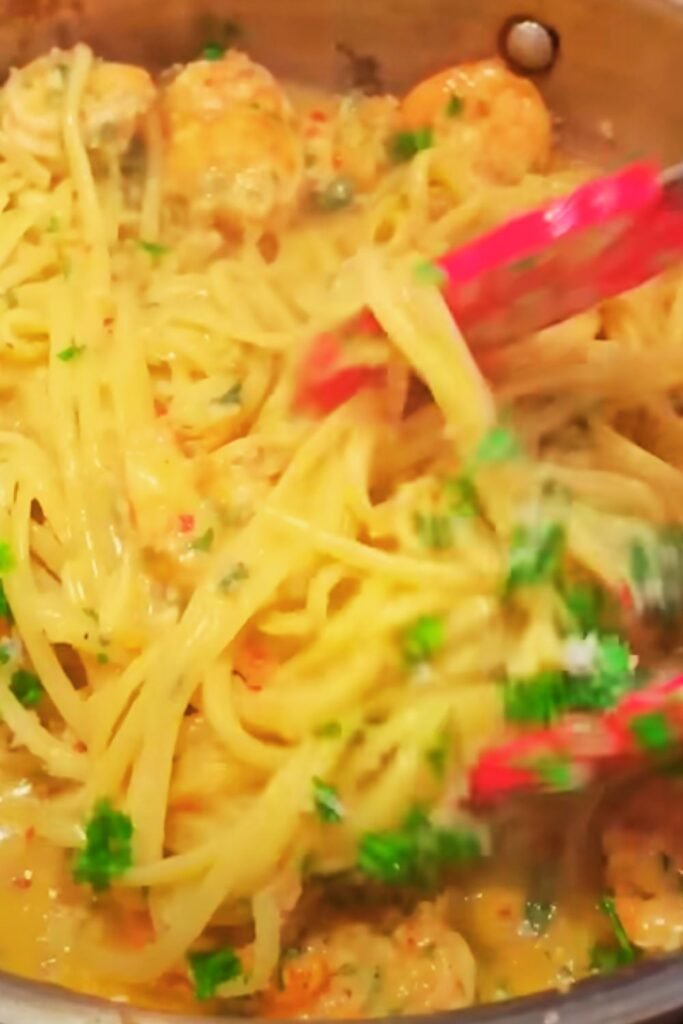When I first discovered the magic of scampi cooking, I was amazed at how such simple ingredients could create restaurant-quality meals in just 30 minutes. Whether you’re cooking at home after a long day or preparing a satisfying meal around the campfire, scampi-style dishes offer the perfect combination of flavor, speed, and versatility.
Today, I want to share my experience with creating quick scampi meals that work beautifully both in your home kitchen and as camping food. From classic shrimp scampi to hearty chicken variations, plus some innovative skillet supper mixes that have become my go-to meal kits, this guide covers everything you need to know about mastering the art of quick, flavorful cooking.
Understanding Scampi: More Than Just Shrimp
Scampi : Originally referring to a type of lobster-like crustacean, scampi has evolved in American cuisine to describe a cooking method featuring garlic, butter, white wine, and herbs
Skillet Supper : A one-pan meal that combines protein, vegetables, and seasonings cooked together in a single skillet for easy preparation and cleanup
Meal Kit : Pre-planned combination of ingredients and seasonings that can be quickly assembled into a complete meal
30-Minute Meals : Complete dishes that can be prepared, cooked, and served within 30 minutes from start to finish
The beauty of scampi cooking lies in its simplicity and adaptability. I’ve discovered that the basic technique – sautéing protein with garlic, butter, and herbs – works equally well with shrimp, chicken, or even vegetables. This versatility makes it perfect for both everyday cooking and outdoor adventures.
Classic Shrimp Scampi: My Foolproof Method
My approach to shrimp scampi focuses on achieving that perfect balance of garlic flavor without overwhelming the delicate sweetness of the shrimp. Over the years, I’ve refined this technique to work consistently, whether I’m using a gas stove at home or a camp stove in the wilderness.
Essential Shrimp Scampi Components
| Ingredient | Quantity (Serves 4) | Purpose | Substitution Options |
|---|---|---|---|
| Large shrimp (peeled) | 1.5 lbs | Main protein | Prawns, langostinos |
| Garlic cloves | 6-8 cloves | Flavor base | Garlic powder (2 tsp) |
| Butter | 6 tablespoons | Richness | Olive oil, ghee |
| White wine | 1/2 cup | Deglazing | Chicken broth, lemon juice |
| Fresh parsley | 1/4 cup | Freshness | Dried parsley (1 tbsp) |
| Lemon juice | 3 tablespoons | Acidity | Lime juice, white vinegar |
| Red pepper flakes | 1/2 teaspoon | Heat | Cayenne pepper |
| Pasta | 1 lb linguine | Base | Angel hair, spaghetti |
The key to perfect shrimp scampi is timing. I always start by getting my pasta water boiling first, then begin the scampi sauce. The entire dish comes together in about 15 minutes once you start cooking.
My Step-by-Step Shrimp Scampi Process
I’ve learned that preparation is everything with scampi. Having all ingredients ready before you start cooking ensures nothing overcooks.
- Prep the shrimp: Pat completely dry and season with salt and pepper
- Mince garlic: Keep it relatively coarse for better texture
- Heat the pan: Use medium-high heat to avoid burning the garlic
- Cook shrimp briefly: 2-3 minutes per side maximum
- Create the sauce: Add garlic, then wine, then butter
- Finish with herbs: Fresh parsley and lemon juice at the very end
- Toss with pasta: Add pasta water if needed for consistency

Chicken Scampi: A Heartier Alternative
When I want something more substantial than shrimp, chicken scampi has become my favorite variation. The technique remains similar, but the cooking time adjusts to ensure the chicken is perfectly tender and fully cooked.
Chicken Scampi Preparation Guide
| Cut Type | Cooking Time | Internal Temp | Best Use |
|---|---|---|---|
| Chicken breast (sliced thin) | 4-5 minutes per side | 165°F | Quick weeknight meals |
| Chicken thighs (boneless) | 6-7 minutes per side | 165°F | Camping, more flavor |
| Chicken tenderloins | 3-4 minutes per side | 165°F | Kid-friendly portions |
| Chicken chunks (1-inch) | 8-10 minutes total | 165°F | Skillet mixing |
My chicken scampi technique involves pounding the meat to even thickness, which ensures consistent cooking. I season the chicken with salt, pepper, and a touch of Italian seasoning before cooking.
The sauce components remain the same as shrimp scampi, but I often add a splash of chicken broth instead of wine when cooking outdoors, as it’s more practical for camping situations.
Skillet Supper Mix: My Game-Changing Discovery
Creating skillet supper mixes has revolutionized my meal planning, especially for camping trips. These pre-assembled combinations of seasonings and instructions make it possible to create restaurant-quality meals with minimal preparation time.
My Signature Scampi Skillet Mix Recipe
This dry mix stores well and transforms any protein into a delicious scampi-style meal:
- Garlic powder: 2 tablespoons (provides base flavor)
- Dried parsley: 3 tablespoons (adds color and freshness)
- Onion powder: 1 tablespoon (depth of flavor)
- Red pepper flakes: 1 teaspoon (adjustable heat)
- Salt: 2 teaspoons (enhances all flavors)
- Black pepper: 1 teaspoon (essential seasoning)
- Italian seasoning: 1 tablespoon (herb complexity)
- Lemon pepper: 1 teaspoon (citrus notes)
I store this mix in small mason jars, and one batch makes enough seasoning for 6-8 meals. When ready to cook, I use about 2 tablespoons of mix per pound of protein.

30-Minute Meal Planning: My Time-Saving Strategies
The secret to successful 30-minute meals lies in organization and preparation. I’ve developed a system that works whether I’m cooking at home or at a campsite.
My 30-Minute Meal Timeline
| Time Remaining | Task | Notes |
|---|---|---|
| 30 minutes | Start pasta water, prep ingredients | Use this time for chopping and measuring |
| 25 minutes | Begin protein cooking | Shrimp or thin chicken cooks quickly |
| 20 minutes | Add pasta to boiling water | Time it to finish with the protein |
| 15 minutes | Create scampi sauce | Wine, garlic, butter sequence |
| 10 minutes | Combine everything | Reserve pasta water for consistency |
| 5 minutes | Final seasoning and plating | Fresh herbs and lemon juice |
| 0 minutes | Serve immediately | Scampi is best served hot |
This timeline assumes all prep work is done beforehand. I always recommend reading through the entire recipe before starting and having all ingredients measured and ready.
Camping Food Adaptations: Making Scampi Outdoors
Cooking scampi while camping presents unique challenges, but I’ve found several adaptations that work beautifully over camp stoves or even campfires.
Essential Camping Modifications
Equipment considerations: A cast iron skillet works better than non-stick for camping. It retains heat well and can handle the variable temperatures of camp cooking.
Ingredient substitutions: I replace fresh garlic with garlic powder for easier storage and preparation. Dried herbs work better than fresh in outdoor conditions.
Wine alternatives: Instead of wine, I use chicken or vegetable broth, which is more practical for camping and still provides the necessary liquid for deglazing.
Pasta cooking: I often use quick-cooking pasta varieties or even rice as a base when camping, as they require less water and fuel.
My Camping Scampi Equipment List
| Item | Purpose | Alternative |
|---|---|---|
| Cast iron skillet | Even heating | Heavy-duty aluminum pan |
| Wooden spoon | Stirring | Heat-resistant silicone |
| Sharp knife | Prep work | Pre-cut ingredients at home |
| Cutting board | Safe prep surface | Paper plates work temporarily |
| Can opener | Canned ingredients | Manual backup essential |
| Measuring spoons | Accurate seasoning | Pre-mixed seasonings |

Meal Kit Assembly: Preparing for Success
Creating meal kits ahead of time has transformed my cooking routine. Whether for busy weeknights or camping trips, having everything pre-portioned and organized makes cooking stress-free.
My Meal Kit Organization System
I assemble meal kits in gallon-sized freezer bags, with each kit containing everything needed for one complete meal. Here’s how I organize them:
Protein bag: Contains seasoned protein (frozen if make-ahead) Seasoning packet: My scampi mix plus any special seasonings Instruction card: Laminated card with cooking steps and timing Shopping list: Fresh ingredients to buy (pasta, butter, garlic)
For camping kits, I include more shelf-stable ingredients and adjust the recipes accordingly.
Meal Kit Storage Guidelines
| Storage Method | Duration | Best For |
|---|---|---|
| Refrigerator | 3-4 days | Weekly meal prep |
| Freezer | 3 months | Long-term planning |
| Cooler (camping) | 2-3 days | Weekend trips |
| Dry storage | 6 months | Seasoning mixes only |
Advanced Scampi Variations I Love
Once you master the basic technique, there are countless ways to vary scampi dishes. I’ve experimented with many combinations over the years.
Vegetable Scampi Options
Zucchini and yellow squash: Cut into half-moons, cook for 3-4 minutes Bell peppers and onions: Classic combination, adds sweetness Mushroom medley: Mix of shiitake, cremini, and button mushrooms Asparagus spears: Trim tough ends, cook until crisp-tender
Protein Combinations I Recommend
Shrimp and scallops: Luxury surf-and-surf variation Chicken and sausage: Hearty, filling combination Mixed seafood: Shrimp, mussels, and calamari Tofu and vegetables: Vegetarian option with extra firm tofu
Nutritional Considerations and Modifications
Understanding the nutritional aspects of scampi dishes helps me make informed choices about ingredients and portions.
Nutritional Breakdown (Per Serving)
| Component | Traditional Recipe | Lighter Version | Camping Version |
|---|---|---|---|
| Calories | 520 | 380 | 450 |
| Protein | 35g | 38g | 32g |
| Carbohydrates | 45g | 48g | 50g |
| Fat | 22g | 12g | 18g |
| Sodium | 890mg | 620mg | 950mg |
For lighter versions, I reduce butter and add more herbs and lemon juice for flavor. The camping version typically has slightly higher sodium due to preserved ingredients.
Dietary Adaptation Strategies
Gluten-free: Use rice, quinoa, or gluten-free pasta Low-carb: Serve over zucchini noodles or spaghetti squash Dairy-free: Replace butter with olive oil or vegan butter Low-sodium: Use fresh herbs instead of salt, rinse canned ingredients
Troubleshooting Common Scampi Problems
Over the years, I’ve encountered and solved most scampi cooking challenges. Here are the most common issues and my solutions:
Texture and Flavor Issues
Rubbery shrimp: Usually caused by overcooking. Cook just until pink and curled. Bland sauce: Not enough acid. Add more lemon juice or a splash of vinegar. Greasy texture: Too much fat. Balance with pasta water or broth. Burnt garlic: Heat too high. Always use medium heat for garlic.
Camping-Specific Challenges
Uneven heating: Rotate the pan frequently, use a heat diffuser if available. Wind affecting flame: Create a windscreen or move to a sheltered area. Limited water: Use less pasta and more protein, or switch to rice. Storage concerns: Keep proteins very cold, use dry ice for longer trips.
Serving Suggestions and Accompaniments
The right accompaniments can elevate a simple scampi dish into a memorable meal. I’ve found several combinations that work particularly well.
My Favorite Side Dishes
Simple green salad: Dressed with lemon vinaigrette to complement the scampi Garlic bread: Perfect for soaking up the delicious sauce Roasted vegetables: Asparagus, broccoli, or Brussels sprouts Rice pilaf: Great alternative to pasta, especially when camping
Presentation Tips I Use
Warm the plates: Helps keep the dish hot longer Fresh herb garnish: A sprig of parsley or basil adds color Lemon wedges: Always serve with fresh lemon on the side Family style: Large platters work well for camping or casual dining
Storage and Reheating Guidelines
Proper storage extends the life of scampi dishes and maintains quality for later enjoyment.
Storage Best Practices
| Storage Type | Duration | Quality Notes |
|---|---|---|
| Refrigerator | 3 days | Best reheated gently |
| Freezer | 1 month | Texture changes slightly |
| Room temperature | 2 hours maximum | Food safety concern |
Reheating method: I prefer using a skillet over low heat, adding a splash of broth or water to prevent drying out. Microwave reheating works but can make seafood rubbery.
Seasonal Adaptations and Ingredient Variations
I adjust my scampi recipes throughout the year based on ingredient availability and seasonal preferences.
Spring Variations
- Fresh peas and asparagus
- Lemon zest for brightness
- Fresh herbs from the garden
Summer Adaptations
- Cherry tomatoes for color
- Fresh basil instead of parsley
- Lighter preparations for hot weather
Fall Modifications
- Butternut squash cubes
- Sage instead of parsley
- Heartier portions for cooler weather
Winter Comfort Versions
- Root vegetables as additions
- Richer sauces with cream
- Warming spices like paprika
Cost-Effective Scampi Cooking
Making scampi dishes budget-friendly without sacrificing quality requires strategic shopping and ingredient choices.
Budget-Friendly Protein Options
| Protein | Cost per lb | Flavor Rating | Cooking Time |
|---|---|---|---|
| Frozen shrimp | $8-12 | Excellent | 5-6 minutes |
| Chicken thighs | $3-5 | Very good | 12-15 minutes |
| Chicken breast | $5-8 | Good | 10-12 minutes |
| Firm tofu | $2-3 | Good with seasoning | 8-10 minutes |
Money-Saving Shopping Tips
Buy frozen seafood: Often better quality than “fresh” seafood that’s been sitting Use chicken thighs: More flavorful and less expensive than breasts Grow herbs: Fresh herbs are expensive but easy to grow Buy in bulk: Garlic, pasta, and spices cost less in larger quantities
Questions and Answers
Q: Can I make scampi dishes ahead of time for meal prep?
While scampi is best served fresh, I do prepare components ahead. I’ll cook and season proteins, then store them separately from the sauce. When ready to eat, I quickly reheat the protein and make fresh sauce, which takes about 5 minutes. The pasta should always be cooked fresh for the best texture.
Q: What’s the best pasta shape for scampi dishes?
My go-to choices are linguine and angel hair because their long strands coat well with the sauce. However, when camping, I sometimes use penne or shells because they’re easier to eat and less likely to create a mess. The key is choosing a shape that will hold the sauce well.
Q: How do I prevent the garlic from burning in scampi?
Temperature control is crucial. I always use medium heat and add the garlic to the pan when the oil is warm but not smoking. I also mince the garlic relatively coarsely – tiny pieces burn faster than larger ones. If you’re worried about burning, you can cook the protein first, remove it, then make the sauce and add the protein back.
Q: Can I substitute the wine in scampi recipes?
Absolutely! The wine provides acidity and helps deglaze the pan. I substitute with chicken or vegetable broth, adding extra lemon juice for acidity. For camping, I often use broth because it’s more practical. Some people use white grape juice diluted with water, but I prefer the broth option.
Q: What’s the secret to getting restaurant-quality scampi at home?
The biggest secrets are high heat, proper timing, and not overcrowding the pan. I cook proteins in batches if necessary to avoid steaming. Also, I always finish with fresh herbs and lemon juice off the heat – this keeps the flavors bright and prevents the herbs from wilting completely.
Q: How do I adapt scampi recipes for camping without refrigeration?
I focus on shelf-stable ingredients and proper food safety. Canned chicken works surprisingly well, and I use garlic powder instead of fresh. For proteins that need refrigeration, I use frozen items as ice packs in my cooler, then cook them as they thaw. I also pre-make seasoning mixes to simplify camp cooking.
Q: Why does my scampi sauce separate or look oily?
This usually happens when the butter is added too quickly or the heat is too high. I always lower the heat before adding butter and whisk it in gradually. If the sauce does separate, adding a splash of pasta water often brings it back together. The starch in pasta water acts as an emulsifier.
Q: What vegetables work best in scampi dishes?
I prefer vegetables that cook quickly and complement the garlic-butter flavor profile. My favorites include cherry tomatoes, asparagus, bell peppers, zucchini, and mushrooms. I add them at different times based on their cooking requirements – harder vegetables first, delicate ones last.
Q: How do I know when shrimp is perfectly cooked?
Properly cooked shrimp should be pink, opaque, and formed into a loose C-shape. Overcooked shrimp curls into a tight circle and becomes rubbery. I usually cook large shrimp for 2-3 minutes per side, depending on size. They should feel firm but not hard when pressed gently.
Q: Can I make a large batch of scampi for a crowd?
Yes, but it requires some strategy. I cook the protein in batches to avoid overcrowding, keep it warm in a low oven, then make the sauce in the largest skillet I have. For very large crowds, I sometimes make the sauce in a large pot instead of a skillet. The key is maintaining proper cooking temperatures throughout the process.
Creating delicious scampi dishes has become one of my favorite cooking techniques because of its versatility and reliability. Whether I’m making a quick weeknight dinner at home or cooking over a camp stove in the wilderness, these recipes consistently deliver satisfying, flavorful meals that bring people together around the table. The combination of simple ingredients, quick cooking times, and endless variation possibilities makes scampi cooking an essential skill for any home cook who values both efficiency and flavor.